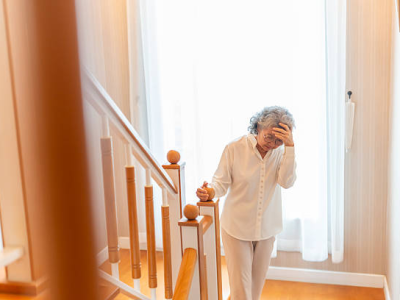More stewardship needed for postoperative antibiotics in kids, study finds
A multicenter observational study found that the use of antibiotics after nonemergent surgery in children varied widely across US hospitals but was not correlated with skin site infection (SSI) in children, US researchers reported yesterday in JAMA Surgery.
Using clinical outcomes and antibiotic use data from 93 hospitals participating in the American College of Surgeon's Pediatric National Surgical Quality Improvement Program, a team led by researchers with Boston Children's Hospital evaluated postoperative surgical antimicrobial use and association with SSI in children ages 18 and under who underwent nonemergent clean and clean-contaminated procedures from June 2019 through June 2021.
Use of postoperative prophylaxis was defined as continuation after incision closure of one or more of the same antibiotics used before and during the procedure—a practice common in pediatric surgery but not recommended by guidelines because of evidence demonstrating a lack of benefit. The primary outcome was 30-day postoperative SSI rate.
A total of 40,611 patients were included in the analysis, of which 41.6% received postoperative prophylaxis (hospital range 0% to 71.2%). Odds ratios (ORs) for postoperative prophylaxis use ranged 190-fold across hospitals (OR, 0.10 to 19.30), and ORs for SSI rates ranged 4-fold (OR, 0.55 to 1.90).
But no correlation was found between use of postoperative prophylaxis and SSI rates overall (Pearson correlation coefficient [r] = 0.13; P = .20), nor when stratified by SSI type (incisional SSI, r = 0.08; P = .43 and organ space SSI, r = 0.13; P = .23), and surgical specialty (general surgery, r = 0.02; P = .83; urology, r = 0.05; P = .64; plastic surgery, r = 0.11; P = .35; otolaryngology, r = −0.13; P = .25; orthopedic surgery, r = 0.05; P = .61; and neurosurgery, r = 0.02; P = .85).
The study authors say the findings indicate that implementing targeted stewardship efforts to reduce postoperative antibiotic use in pediatric surgery is possible without an increase in the SSI rate.
"The results of this analysis provide a call to arms for stewardship efforts to reduce postoperative prophylaxis use, particularly for hospitals that are relatively high users compared with their peers," they wrote.
Oct 19 JAMA Surg abstract
Small trial supports shorter antibiotics for kids' pneumonia
A randomized clinical trial conducted in Canada found that 5 days of high-dose amoxicillin was non-inferior to 10 days in children with community-acquired pneumonia (CAP), researchers reported this week in the Journal of the Pediatric Infectious Diseases Society.
The blinded, noninferiority trial enrolled children ages 6 months to 10 years who were treated as outpatients for CAP at two pediatric emergency departments in Canada. Trial participants were randomized 1:1 to receive either 5 days of high-dose amoxicillin followed by 5 days of a placebo or an additional 5 days of amoxicillin.
The primary outcome was clinical cure defined as improvement within 4 days of enrollment, improvement in the work of breathing and no tachypnea at follow-up (14 to 21 days), no more than one fever after day 4, and no additional antibacterial therapy or hospital admission because of lower respiratory tract illness.
A total of 254 children were randomized, with 126 in each arm. In the intention-to-treat analysis, clinical cure at 14 to 21 days occurred in 85.7% of children in the 5-day amoxicillin group and 84.1% in the 10-day amoxicillin group. In a secondary (post hoc) analysis that defined clinical cure as initial improvement during the first 4 days and lack of need for additional antibacterial therapy or hospital admission, about 93.5% in the 5-day group and 90.4% in the 10-day group met these criteria.
The study authors note that the trial did not definitively identify patients as having bacterial pneumonia, and of the children who had a baseline respiratory panel, more than 60% had a virus identified, which may have affected the trial's ability to detect a difference between short- and standard-course antibiotics. Nonetheless, they say the findings still add to the growing body of evidence that short-course antibiotic therapy is effective for CAP.
They conclude, "In the face of increasing antimicrobial resistance and accumulating evidence of the harms of antibiotics, clinicians should consider a 5-day course of high-dose amoxicillin for CAP in children who do not require hospitalization. As pediatric CAP guidelines are updated, these data should inform new recommendations for the duration of treatment of outpatients with CAP."
Oct 19 J Ped Infect Dis Soc abstract
High-path avian flu hits more poultry in 7 states
Over the past 2 days, seven states reported more highly pathogenic avian flu outbreaks in poultry, mostly involving backyard birds, with three states reporting the virus on commercial farms, the US Department of Agriculture (USDA) Animal and Plant Health Inspection Service (APHIS) said in its latest updates.
Of the farm-based outbreaks, Utah reported two more outbreaks on turkey farms in Sanpete County that, taken together, have 103,200 birds. South Dakota reported an outbreak at a breeding facility in Roberts County that houses 3,800 birds. And Nebraska reported an event at a game bird producer in York County that has 34,900 birds.
States reporting more outbreaks in backyard birds include Kansas, Florida, Missouri, and North Dakota.
Since the Eurasian H5N1 outbreaks were first detected in US poultry in February, the outbreaks have led to the loss of more than 47.7 million birds across 42 states. A small but steady stream of outbreaks continued over the summer, and activity ramped up with the approach of fall.
USDA APHIS poultry avian flu updates














